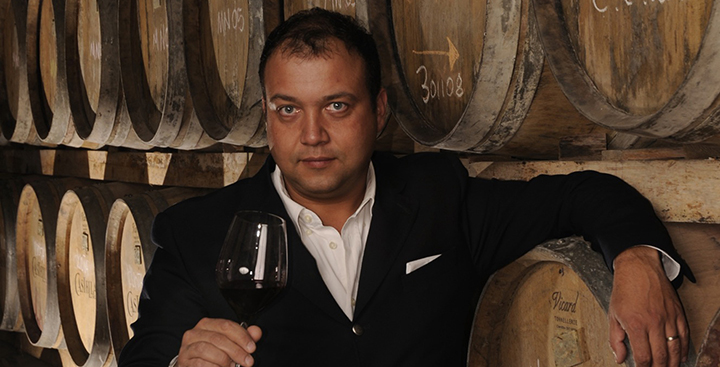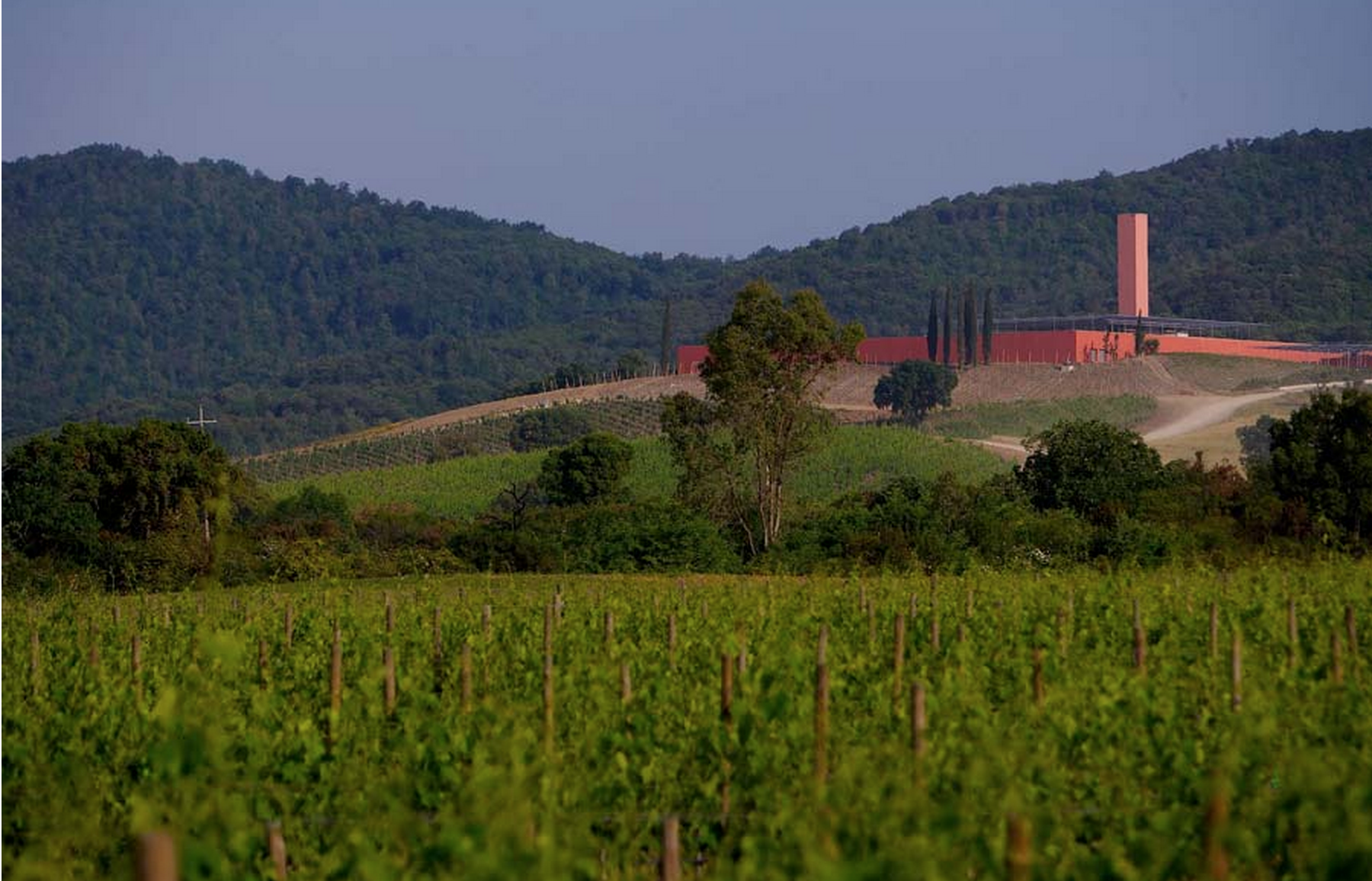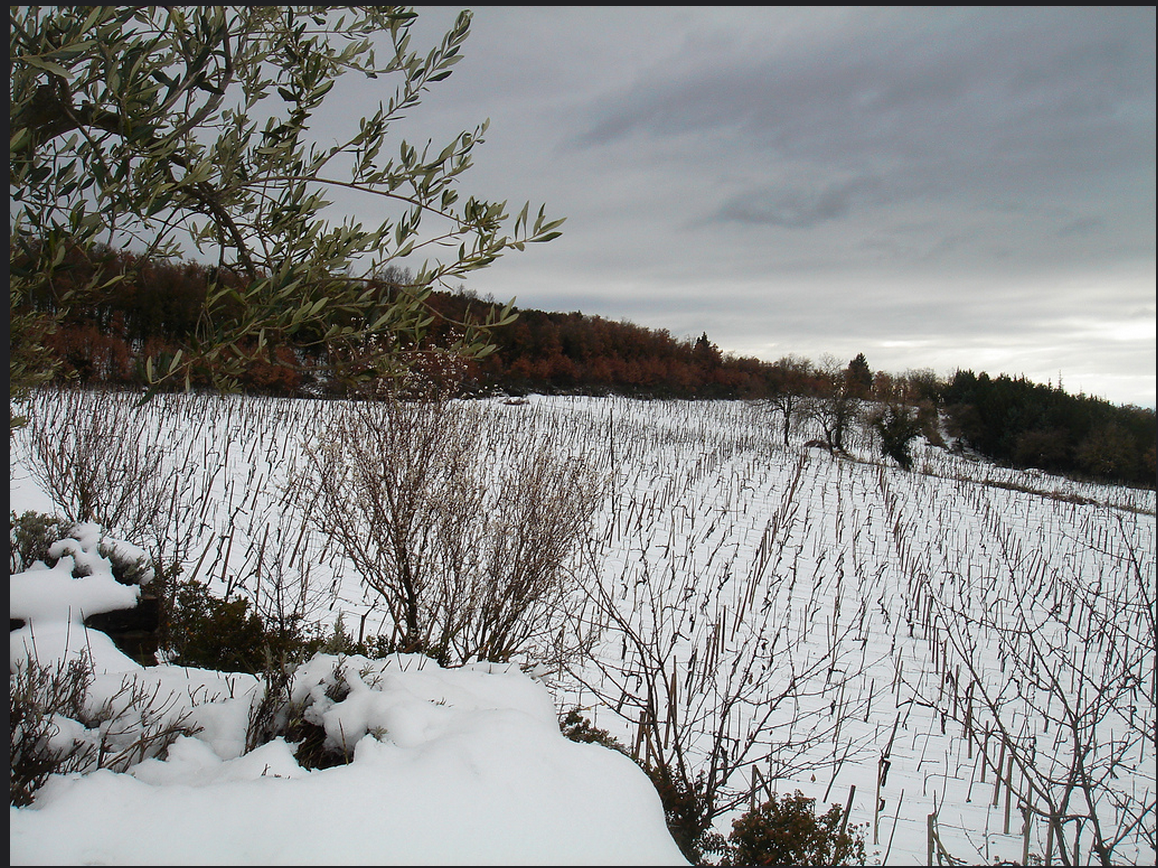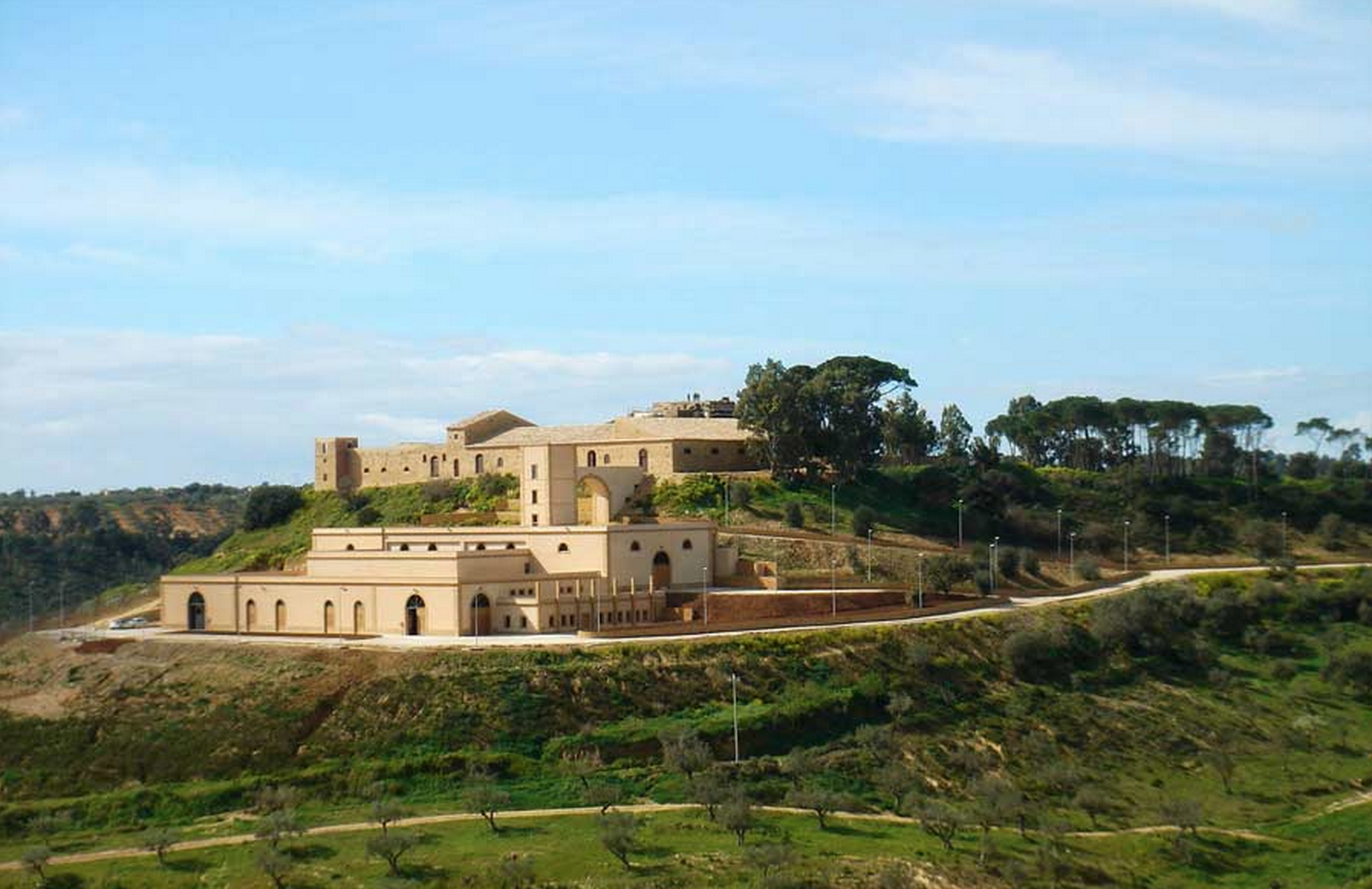
We speak to winemaker Alessandro Cellai of famed Tuscan winery Rocca di Frassinello and the Sicilian Feudi del Pisciotto
Christopher Barnes: Alessandro, tell us about what it's like being the winemaker at two very important but different estates, Rocca di Frassinello and Feudi del Pisciotto.
Alessandro Cellai: First of all, for me, it's a great honor to be the winemaker at these two very important estates because I have the possibility to play and to taste the two extremely different terroirs - the Sicilian terroir and the Maremma terroir. Maremma is still in Tuscany but it is completely different than many other different expressions of Tuscany, like Chianti Classico, Brunello di Montalcino, and Nobile Di Montepulciano. Maremma is a very particular terroir and is a particular expression of that side of Tuscany.

Tell us about how this group came together.
The group was created about 45 years ago, starting with the first winery part of this group named the Castellare di Castellina, that is in Chianti. The two estates that we have here are the two newest additions to the group. Feudi del Pisciotto was born in 2000, and Rocca di Frassinello was born in 1999. Now the total size of the group is about 1 million bottles, including Castellare, Rocca di Frassinello and Feudi del Pisciotto.
What are some of the challenges having two very different terroirs and making sure that you're coming up with an expression that's true to each individual estate?
The real challenge for me is to give every single vintage the real expression of the grape varietal without forgetting the terroir, where the grape varietal was born. That is my real mission, especially in Sicily, where we are playing mainly with single grapes like Grillo, like Nero d'Avola, like Frappato - three very important expressions of the Sicilian character, because they are three indigenous and historical grapes from Sicily. That is my real mission, to try to bring into the bottle the highest expression of the grapes with the flavor of the soil.
Maremma is one of the very important areas of Tuscany. Of course in Maremma it's a different system to play with the grapes because coming from a joint venture, we are using grapes from the east of Tuscany like Sangioveto and grapes from the French side of our property like Merlot and Cabernet Sauvignon. At the end of the story, the mission is the same. Of course it's a blend of different grapes but always without forgetting the minerality and the balsamic note that is the stamp of that side of Tuscany.
Tell us about the unique partnership you have in Tuscany.
This is the first, and I am almost sure that it's the last Italian and French joint venture between Mr. Panerai, the owner of our group of estates, and Eric de Rothschild, the owner or president of Chateau Lafite. I said the last because it is not easy to compensate the two different macro areas in the world of wine production. It's the first time that the two major producers of wine in the world, the Italian and French, are deciding to build something together. To coexist, the two biggest realities in the wine world, is not easy. But it was a great opportunity personally for me to have the possibility to learn a lot about Chateau Lafite and to have the possibility to exchange some business opportunities with the winemakers of one of the most important wine properties in the world. Chateau Lafite is considered one of the best. Rocca di Frassinello was born in 1999, again through this strong friendship between Mr. Panerai and Eric de Rothschild.
Originally, the idea of Rocca di Frassinello was much smaller because the idea was to build a sort of a finger expansion of our Tuscan property, Castellare, and to have only a possibility of enlarging a little bit of the production of Castellare.

But after that meeting between Panerai and Eric de Rothschild, they decided to build something unique and serious and to make a sort of very, very important wine project in the wine industry in Italy. Now, Rocca di Frassinello, in terms of size, is one of the largest properties in Tuscany. It is more than 500 hectares. 80 hectares are already planted for vineyard, with the production at about half a million bottles. The most important thing is that from the entry level to the top of the line, we tried to put all our efforts in every vintage in order to produce the highest quality as possible for that area of Tuscany.
Tell us, dealing with an iconic winery like Lafite, is there a little bit of a "We're better than you," in terms of the relationships working with those guys?
No. The relationship was extremely beautiful since the beginning because Mr. Panerai and Eric de Rothschild decided to bring into this project the experience of Castellare with Sangioveto, that is Castellare is one of the oldest properties in Tuscany still using that original clone. From the international side, the experience of Lafite with Cabernet-Merlot. It was like that since the beginning and still is a real partnership in the sense to make in the same basket from one side, the very important experience with Sangioveto and, from another side, the experience of Cabernet-Merlot.
Tell us about Maremma. What is the terroir of Maremma in Tuscany? How is it unique?
First of all, we have to describe Maremma because Maremma is the long piece of Tuscany. Starting from Grosseto and going to Livorno it's a piece about 75 kilometers long and about five kilometers wide. It starts from the ocean and goes five kilometers to six kilometers inland. It's a long piece of soil. Inside of this area, there are many different terroirs, many different expressions of the same line of Tuscany. For example, the Bolgheri that is in the Livorno side, extremely north of Maremma, has sandy soil, very, very close to the ocean with a completely different microclimate than we have in the middle area of Maremma, where we are. It is also completely different in the extreme southern part of Maremma, in terms of the denomination, where they have the Morellino di Scansano.
Our side of Maremma, this is the central part of Maremma, is very unique because the soil is almost the same characeristically as the Chianti Classico soil. The central part of Tuscany is rich in rocks with a little bit of limestone. This is one of the hardest areas to produce Sangiovese in Maremma. For example, if you go to Bolgheri, it's almost impossible to find any wine with Sangiovese in the blend, because Sangiovese in that side of Maremma is very hard to grow - with that temperature, with that soil, without stone, and very sandy soil.
But the particular thing about that side of Maremma is the minerality that we can recognize in all our wine. Another very particular thing about Maremma, this side of Maremma, is the balsamic notes that we have at the end of the fermentation and also during the process of aging.
At the end, we are making this beautiful mix with power and elegance coming from the grapes and this beautiful mix of minerality and balsamic notes.
You farm organically?
Yes.
Tell us about why you do that and why that's important to you?

First of all, since beginning with our first property, our main philosophy was to respect the environment. Because our philosophy was and still is the same, that if we respect the environment, the environment gives us the possibility to produce very good quality wines. It's a question of exchange of respect. No? We respect the soil, we respect the environment and the environment gives us the opportunity to produce good quality wines. That is first of all. Secondly, because it is possible to produce fantastic quality wines without using chemical products and without using any artificial products in the cellar and especially in the vineyard.
The most important thing is to follow each step during the vegetation. That is extremely important because of course, if you're not using any chemical products, you have the possibility to spray only sulfur and copper. That is the only way we have to control the fungus that we have during the season. But the most important thing is to be present, so to have people able to be in the vineyard everyday, controlling every operation during the season. In the cellar, the most important thing is to respect what we receive from mother nature. Because if we have beautiful quality grapes at the beginning, there is no need for any artificial additions to produce extra quality wines.
Is it harder to be an organic winemaker in Sicily than it is in Tuscany?
No it's almost the same system, the same philosophy. If we have to be extremely honest, probably in Sicily it's even easier because the weather is so beautiful. Almost every vintage, there are just a few days of rain during the season, and then it's easier to control the fungus in the vineyard. In Tuscany, there are some vintages where it's a little difficult but nothing is impossible. It's our philosophy.
Tell us about your background. How did you become a winemaker?
That is a very nice story because since the beginning my parents were completely removed from the wine industry. My father was in the furniture business for many, many years but when I was five or six years old, I spent much of my free time with my uncle. My uncle is a priest, still is a priest, a Catholic priest, and it was very common 20 or 30 years ago in Tuscany to have a little vineyard around the church, to make the wine for the community. The church was in charge of producing the wine for the community.
Spending my free time with my uncle, because my father was always traveling around the world for his business, I had many opportunities to follow the vineyards first, to follow the wine production. I remember that when I was about six years old - it was the 73 vintage I think - my uncle gave me a basket of grapes, and he told me to produce my own wine. I produced. I was crushing the grapes, I was making a fermentation. It was a very empiric fermentation but it was fermented. At the end I produced 25 bottles of my own wine on that field. I still have one or two bottles in my house.
Wow.
My uncle tasted the bottles at the time, he said, "Oh, it was good for your first trial." He said, "Maybe one day you can be a winemaker." Probably, my feeling, my passion for this business was coming from this possibility, no, from my uncle.
I always say, "Probably you are the reason of my life, no?" Because now, I am a winemaker because he taught me a lot since I was very, very young.
That's a great story. Tell us a little bit about the terroir of Sicily and specifically, where you're making your wines right now.
First of all, the location of Feudi del Pisciotto is Niscemi. Niscemi is a small village between Piazza Almerina and Caltagirone. That is one of the oldest areas of production of wine. Considering the elevation, that is one of the very important parameters in the production of wine, our area is one of the highest. We are producing our wines in an average elevation of 200 to 250 meters. With exception of the Etna volcano, the Etna mountain, we are one of the highest parts of Sicily producing wine.
That's important because it means that you can retain acidity. Correct?

Yes. That is extremely important because for my philosophy, wine without freshness is a wine with something mixed. That is my idea. Because the acidity is equal to freshness. The wine cannot be fresh without acidity. The acidity is coming from the grape, and only if you have the perfect conditions in the soil as a microclimate, can you produce grapes with the right acidity.
They were making wines on that estate a long, long time ago. Right? There is evidence of wine being made in Roman times?
Yeah. I invite you and all of your customers to visit Feudi del Pisciotto because it is one of the last examples perfectly alive and still untouched of the palmento. The palmento was the system for making wine at the time of the Romans and Greeks more than 1,000 years ago. In fact, we have on the property what we can call a monument of wine, with eight different vats, eight different lines of production, and with three vats operating totally by gravity. The first vat is used to squash the grapes, the second to collect the juice for fermentation, and the third one to collect the wine after the fermentation. It means that we are talking right now as new technology, was actually a gravity system a thousand years ago. They were already making wine with a gravity system.

It also shows that you picked a good spot. Right?
Exactly. Now, in half of this beautiful building, it's totally renovated and we decided to build a very beautiful wine relay with a fantastic spa connected with a vinotherapy program that is very, very important to preserve the integrity of the skin. The wine is rich in polyphenols, and polyphenols are antioxidants.
Amar'e Stoudemire, a famous basketball player, he used to play for the Knicks, he takes wine baths.
Yes.
He got traded to Dallas and they don't have any wine baths in Dallas so he's probably not doing so good. The last thing I wanted to ask you was the the designer labels. Tell us a little bit about that whole program. It's very interesting.
Yes, that is a very important part of our project in Sicily, because we have this beautiful collection called the fashion designer collection with ten different wines with ten labels designed by probably the most important fashion designers of Italy like Versace, Valentino, Carolina Marengo, Missoni, Giambattista Valli, Gianfranco Ferrè, Blumarine and a few others. We don't pay any fee to the fashion designers but we have an agreement with them. We use part of the revenues from every vintage to help with the renovation and restoration of some museums and artwork of Sicilian culture.
This is extremely important because Sicily is probably the richest part of Italy in terms of culture. There are a lot of monuments. There is a lot of artwork, but many of them are not totally destroyed but partially destroyed by time. This is a very important program in order to preserve that part of our history, our culture. All the designers are extremely happy to participate in this program.
That's fantastic, and they're beautiful bottles.














